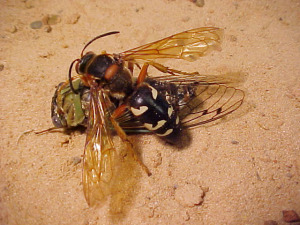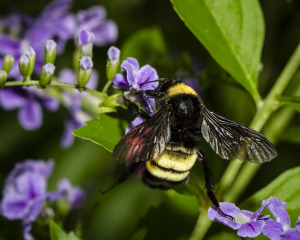What’s a bee? And what isn’t?
Distinguishing between a bee and wasp can be tricky at times, but here are some simple characteristics to differentiate between the two:
- Wasps tend to have more prominent coloration and patterns than bees.
- Wasp bodies are usually smoother, whereas bees tend to be more hairy.
- Due to their hairless bodies, wasps do not carry pollen. They do feed on nectar and collect other insects to feed to their carnivorous young.
- Wasps can sting repeatedly, as opposed to some bees that lose their stinger once it is used.
Still not sure what insect you spotted? Submit your inquiry and any photos you have of the insect to the Texas A&M Department of Entomology Insect ID form: https://askanentomologist.tamu.edu/insect-id-form/
Wasps found in Texas
Native bees of Texas

Photo credit: USGS Bee Inventory and Monitoring Lab

Photo Credit: USGS Bee Inventory and Monitoring Lab












